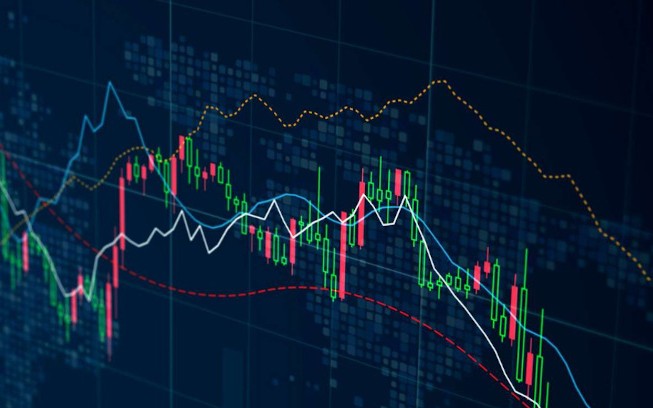
In the world of currency trading, having a well-defined framework is crucial for success. A Forex trading framework not only serves as a roadmap for traders but also enhances decision-making by providing clear guidelines. This article aims to deliver professional insights into creating a comprehensive Forex trading framework, incorporating various elements including strategy formulation, risk management, and practical application. For more resources, you can visit forex trading framework professional guidelines forex-level.com.
Understanding the Forex Market
The Forex (foreign exchange) market is the largest financial market in the world, with a daily trading volume exceeding $6 trillion. In this market, currencies are traded in pairs, and the value of one currency is determined against another. Understanding the fundamental factors that influence currency values, such as economic indicators, geopolitical events, and market sentiment, is crucial for developing an effective trading framework.
Foundation of a Forex Trading Framework
A solid Forex trading framework typically comprises three core components: market analysis, trading strategy, and risk management. These components work together to form a coherent system that helps traders navigate the complexities of the Forex market.
1. Market Analysis
Market analysis is the first step in any professional trading framework. It can be divided into two main categories: fundamental analysis and technical analysis.
- Fundamental Analysis: This approach examines economic indicators, central bank policies, and geopolitical events to forecast future price movements. Key indicators include GDP, unemployment rates, inflation, and interest rates. Traders who use fundamental analysis focus on understanding the broader economic landscape and assessing currencies based on their economic stability.
- Technical Analysis: This method involves analyzing price charts and statistical indicators to identify patterns and trends. Traders use various tools like moving averages, support and resistance levels, and oscillators to make informed decisions. Technical analysis is especially valuable for short-term traders, as it helps in timing market entries and exits.

2. Developing a Trading Strategy
Your trading strategy will be your blueprint for trading in the Forex market. It should be based on your individual trading style, risk tolerance, and time commitment. There are several popular trading styles, including:
- Scalping: Involves making numerous trades throughout the day, aiming to profit from small price movements.
- Day Trading: Similar to scalping, but positions are held throughout the day, with traders closing all trades before the market closes.
- Swing Trading: Focuses on capturing price movements over several days to weeks, allowing traders to trend with the market direction.
- Position Trading: A long-term strategy where traders hold positions for weeks, months, or even years, relying on fundamental analysis.

Regardless of your chosen style, your trading strategy should include clear entry and exit points, position sizing, and risk-reward ratios. A well-rounded trading strategy enhances consistency and helps minimize emotional decision-making.
3. Implementing Risk Management
Risk management is arguably the most important aspect of a Forex trading framework. Without a proper risk management strategy, even the best trading systems can lead to significant losses. Here are some essential risk management techniques:
- Risk per Trade: Determine the maximum percentage of your trading capital that you are willing to risk on a single trade. Many professional traders recommend risking no more than 1-2% of your capital per trade.
- Stop-Loss Orders: Use stop-loss orders to automate your exit points. These orders minimize potential losses by closing your position at a preset price.
- Diversification: Avoid putting all your capital into a single trade or currency pair. Diversifying your investments can reduce risk.
- Regularly Review and Adjust: Continuously assess and refine your risk management strategies. The market environment is dynamic, and your approach should adapt accordingly.
Trading Psychology
In addition to the technical aspects of trading, psychology plays a significant role in a Forex trading framework. Emotional discipline is crucial for any trader’s success. Many traders struggle with fear and greed, which can lead to impulsive and irrational decisions. Here are some tips to maintain a disciplined mindset:
- Stick to Your Plan: Develop a trading plan and adhere to it. Avoid making trades based solely on emotions or market noise.
- Accept Losses: Understand that losses are a part of trading. Accept your losses gracefully and learn from them.
- Practice Mindfulness: Stay attuned to your emotional state while trading. Mindfulness techniques can help in maintaining focus and reducing stress.
Backtesting and Optimization
Once you have developed your trading strategy, it is essential to backtest it using historical data. Backtesting allows you to assess how your strategy would have performed in the past, providing valuable insights into its strengths and weaknesses. Additionally, use optimization techniques to refine your strategy parameters for better performance.
Continuing Education and Adaptation
The Forex market is highly dynamic, making continuous education vital for traders. Attend seminars, webinars, and workshops to stay updated on market trends, new strategies, and economic changes. Joining Forex trading communities and forums can also facilitate knowledge sharing and networking with other traders.
Finally, remain adaptable. The strategies that worked in the past may not necessarily perform well in the future. Continuously evaluate your framework and be open to modifications as market conditions change.
Conclusion
In conclusion, establishing a professional Forex trading framework is essential for achieving long-term success in the currency market. By integrating market analysis, a well-defined trading strategy, risk management, and psychological discipline into your framework, traders can navigate the complexities of Forex trading more effectively. Remember that ongoing education and flexibility are critical in adapting to an ever-changing market. With dedication and the right framework, you can unlock your potential in Forex trading.
